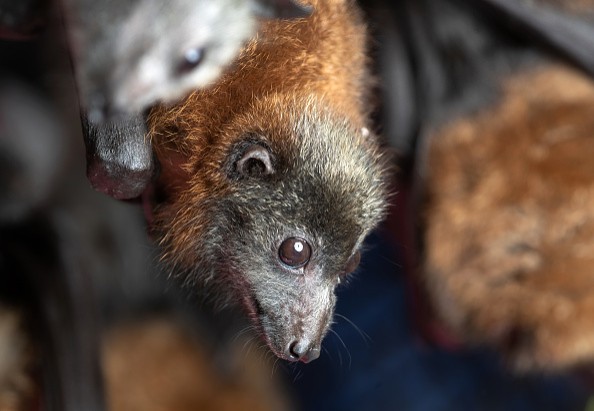The coronavirus disease 2019, or COVID-19, might actually be older - with the disease originating not at a Wuhan wet market last year, but from a mine shaft back in 2012 - according to new study.
Miners from a mineshaft in Yunnan province, in southwestern China contracted the respiratory disease after exposure to bats. The discovery was made by virologist Jonathan Latham and molecular biologist Allison Wilson, both from the Bioscience Resource Project in Ithaca, New York.
Latham and Wilson translated a 66-page master's thesis made in 2013. The author of the thesis is the Chinese medical doctor who attended to the infected miners and sent their infected tissues to the Wuhan Institute of Virology to be tested.

RELATED: Scientists Trace Lineage of the COVID Virus in Bats
A Proposed Origin for SARS-CoV-2 and the COVID-19 Pandemic
In their commentary published in the Independent Science News website, the researchers noted that "virtually no attention" to the physical origin of the SARS-CoV-2 virus' generic relatives. It specifically pointed out two viral sequences - BtCoV/ 4991 and RaTG13.
"The evidence it contains has led us to reconsider everything we thought we knew about the origins of the COVID-19 pandemic," the researchers wrote in the commentary. The discovery has also led the pair to propose how an isolated disease case in 2012 could lead to a global pandemic in 2019.
Their theory claims to explain the source of the polybasic furin cleavage site, a notable characteristic of the SARS-CoV-2. The cleavage site is a region of the viral spike making it easy to be cleaved for the enzyme furin, from the host body, contributing to the spread of the virus in the body.
According to the New York Post, Latham said that the virus "almost certainly escaped" from the Wuhan Lab, leading to the global pandemic.
Similarities Between the 2012 and the 2019 Cases
In the report, it was noted that in April 2012, six miners from the Mojiang mine in Yunnan got the disease after 14 days cleaning bat droppings from the mineshaft. Three of these miners died later.
Li Xu, the author of the master's thesis and the physician who treated the miners, described "high fever, a dry cough, sore limbs, and in some cases, headaches." These are all symptoms now associated with COVID-19, said the authors of the study.
Even the treatment process was similar between the 2012 case and most methods used nowadays to treat COVID-19. In the thesis, miners were treated with ventilators and a mix of medicines including steroids, blood thinners, and antibiotics.
RELATED: AeroNabs: A Novel Protection Against COVID
Latham and Wilson also reported that after successive tests for other diseases - hepatitis, dengue, and even HIV - Li Xu consulted specialists throughout the Chinese mainland. The resource persons tapped by Li included Zhong Nanshan, the Chinese pulmonologist who managed the 2003 SARS Outbreak, refuting the official government attempt to downplay the severity of the respiratory disease. Zhong is currently among the advisors in the Chinese government's efforts to manage the coronavirus pandemic.
The authors of the study emphasized the importance of the meeting with Zhong Nanshan. According to Latham and Wilson, this suggests that the case of the six miners was "of high concern," and that a virus similar to SARS was considered likely.
Our new analysis proposes that #COVID19 (#SARSCoV2) leaked from the Wuhan Institute of Virology which was studying tissues from miners who died in 2012 in a novel #coronavirus outbreak. We call it the Mojiang Miners Passaging theory: #MMPtheory https://t.co/UdCB7CASxM — Bioscience Resource Project (@BioSRP) July 16, 2020
© 2026 ScienceTimes.com All rights reserved. Do not reproduce without permission. The window to the world of Science Times.










